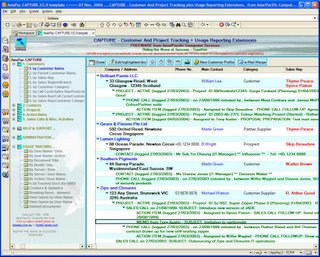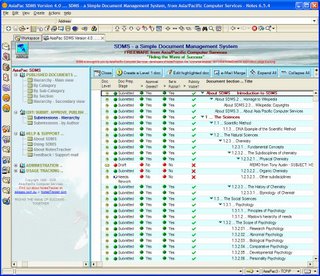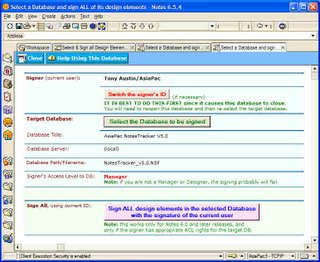
Yesterday -- 06 November 2006, Melbourne, Australia time -- enhanced versions of two of our FREE Lotus Notes applications were released. They have been in beta testing release mode for a month or so.
CAPTURE Version 2.0 is a free CRM database. The name stands for "Customer And Project Tracking plus Usage Reporting Extensions" and the usage reporting is carried out by means of the built-in copy of our unique NotesTracker database usage reporting tool.
As well as numerous small enhancements, this new version of CAPTURE includes a "mail merge" function so that you can now easily merge any of your mail memo documents (from your Notes mail Inbox view) anywhere into the hierarchy of CAPTURE documents. Doubtless your staff have lots of valuable information about your customers and prospects held in their Notes mail files, so this new mail merge capability is a significant new way to incorporate this vital information directly into the CAPTURE database.
Additionally, Version 2.0 of CAPTURE now has a full set of NotesTracker views built in, so that merely by choosing "internal logging" you will cause NotesTracker to store all your tracking documents into the CAPTURE database itself (rather than in an external NotesTracker Repository database). This makes it possible to examine the database usage without having to switch out of the database.
 SDMS -- the Simple Document Management System -- also FREE, and now with the same handy "mail merge" function as CAPTURE.
SDMS -- the Simple Document Management System -- also FREE, and now with the same handy "mail merge" function as CAPTURE.There is also a major new "publishing life cycle" capability, so that (compared with earlier SDMS versions) instead of just being able to create/edit/submit documents and nothing more, they must now be approved, and then finally be released for publishing. Following the "keep it simple" philosophy of SDMS, these are quick-and-easy operations (merely the clicking of radio buttons) that add very little overhead to SDMS document preparation.
According to the SDMS design philosophy, the publishing steps are designed to be simple to carry out.
Of course, as before SDMS has our powerful NotesTracker usage tracking capability built in.
Note: If you happened to download SDMS Version 4.0 yesterday, please be aware that there's already an updated version 4.01 available! It released this less than an hour ago this morning (07 November 2006, Melbourne time). An enhancement was made to the way that editing of the SDMS Database Profile Document is managed.
You'll find links to both the SDMS and the CAPTURE download pages on our web site's home page: that is, either asiapac.com.au or its mirror notestracker.com



